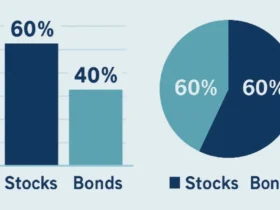Introduction: The Modern Investor’s Dilemma
In 2025, investors have more options than ever before to grow, protect, and manage their wealth. Mutual funds remain one of the most trusted investment avenues for both beginners and professionals. However, the way you invest, withdraw, or transfer your funds can make all the difference.
That’s where SIP (Systematic Investment Plan), SWP (Systematic Withdrawal Plan), and STP (Systematic Transfer Plan) come in — three powerful tools designed to automate and optimize your wealth journey.
Whether your goal is to build long-term wealth, create regular income, or rebalance your portfolio, understanding these strategies is essential. Let’s decode each one — with real-world examples, expert insights, and practical tips.
What is SIP (Systematic Investment Plan)?
A Systematic Investment Plan (SIP) allows investors to invest a fixed amount at regular intervals — weekly, monthly, or quarterly — in a mutual fund scheme.
It’s like planting a tree: small, consistent efforts grow into something massive over time.
Expert Quote:
“SIPs turn volatility into opportunity. By investing regularly, you buy more units when prices are low and fewer when they’re high — averaging your cost.”
— Radhika Gupta, CEO, Edelweiss AMC
How SIP Works:
Let’s say you invest ₹10,000 every month in an equity mutual fund. Over 10 years, assuming an average annual return of 12%, you’d accumulate nearly ₹23 lakh — from just ₹12 lakh invested.
Table 1: SIP Growth Example (₹10,000 per month)
| Duration | Total Investment | Expected Return (12% p.a.) | Final Value |
|---|---|---|---|
| 5 years | ₹6,00,000 | ₹8,22,000 | ₹8.2 lakh |
| 10 years | ₹12,00,000 | ₹23,23,000 | ₹23.2 lakh |
| 15 years | ₹18,00,000 | ₹50,45,000 | ₹50.4 lakh |
Advantages of SIP
- Rupee Cost Averaging: Smooths out market fluctuations.
- Power of Compounding: Longer you stay, the faster your money grows.
- Disciplined Investing: Removes emotional decisions.
- Flexible: You can start small — even ₹500/month.
- Ideal for: Salaried individuals or first-time investors.
When SIP May Not Work:
- If you withdraw too early (less than 3–5 years)
- During prolonged market stagnation without reinvestment discipline
- If you constantly switch schemes chasing returns
In short: SIPs are best for long-term wealth creation — think 10+ years, not quick gains.
What is SWP (Systematic Withdrawal Plan)?
A Systematic Withdrawal Plan (SWP) is the reverse of SIP. Instead of investing regularly, you withdraw a fixed amount periodically from your mutual fund holdings.
Think of SWP as a “monthly income stream” from your investments — ideal for retirees or anyone seeking consistent cash flow.
Expert Quote:
“SWP is like creating your own pension plan. You stay invested while enjoying regular withdrawals.”
— Nilesh Shah, MD, Kotak Mahindra AMC
How SWP Works:
Suppose you have ₹20 lakh in a balanced mutual fund. You set up an SWP of ₹20,000 per month. The fund continues earning returns while you withdraw systematically.
Table 2: SWP Example — ₹20 Lakh Investment at 10% Return
| Year | Starting Balance | Annual Return | Withdrawal | Ending Balance |
|---|---|---|---|---|
| 1 | ₹20,00,000 | ₹2,00,000 | ₹2,40,000 | ₹19,60,000 |
| 3 | ₹19,60,000 | ₹1,96,000 | ₹2,40,000 | ₹19,16,000 |
| 5 | ₹18,80,000 | ₹1,88,000 | ₹2,40,000 | ₹18,28,000 |
This shows how your capital can sustain income for years, especially if returns exceed withdrawals.
Advantages of SWP
- Regular Income Stream: Ideal for retirees or freelancers.
- Tax Efficiency: Only gains withdrawn are taxed — not the principal.
- Market Participation: Investment continues to grow.
- Customizable: Choose your amount and frequency.
- Inflation Shield: Withdrawals can be adjusted yearly.
Limitations of SWP
- Not suitable for short-term investors.
- If fund performance dips, principal may erode.
- Requires careful withdrawal rate planning (ideally ≤ 7–8% yearly).
In short: SWP is best for steady income post-investment phase — e.g., after retirement or achieving a corpus goal.
Also Read: ₹11,480 Crore Created by Top Performing SWP Mutual Funds
What is STP (Systematic Transfer Plan)?

A Systematic Transfer Plan (STP) helps investors move money gradually from one mutual fund to another — usually from debt to equity, or vice versa.
It’s an intelligent way to manage risk and timing, especially in volatile markets.
Expert Quote:
“STP acts like a bridge between caution and opportunity. It lets investors shift from safety to growth, step by step.”
— Ravi Kumar, Financial Planner, Mumbai
How STP Works:
Imagine you have ₹10 lakh parked in a liquid fund. You decide to transfer ₹50,000 every month into an equity fund through STP for 20 months.
This way, your money earns modest returns in the liquid fund while entering equities gradually — reducing market timing risk.
Table 3: STP Example — ₹10 Lakh Transfer from Debt to Equity
| Month | Transfer Amount | Equity Fund NAV | Units Purchased | Remaining in Debt Fund |
|---|---|---|---|---|
| 1 | ₹50,000 | ₹25 | 2,000 | ₹9,50,000 |
| 2 | ₹50,000 | ₹24 | 2,083 | ₹9,00,000 |
| 3 | ₹50,000 | ₹23 | 2,174 | ₹8,50,000 |
As markets fluctuate, you average out entry costs — similar to SIP benefits.
Advantages of STP
- Minimizes Timing Risk: Avoids lump-sum market entry.
- Rupee Cost Averaging: Smooths equity purchase price.
- Earns on Idle Funds: Debt fund earns returns before transfer.
- Flexible: Can be set for months or years.
- Ideal for: Investors with lump-sum money but seeking gradual exposure.
Limitations of STP
- Not useful for short-term market rallies.
- If transfer period is too long, opportunity cost rises.
- Tax implications on debt fund redemptions apply.
In short: STP is best for gradual reallocation between funds — especially when investing a large lump sum.
SIP vs SWP vs STP — Key Differences
| Feature | SIP | SWP | STP |
|---|---|---|---|
| Purpose | Regular investment | Regular withdrawal | Systematic transfer |
| Ideal For | Wealth accumulation | Income generation | Portfolio balancing |
| Cash Flow | Outflow (investment) | Inflow (withdrawal) | Internal fund transfer |
| Taxation | Capital gains on redemption | Capital gains on withdrawn units | Tax on transferred units |
| Risk Profile | Moderate–high | Low–moderate | Depends on funds involved |
| Best Suited For | Salaried individuals | Retirees / income seekers | Lump-sum investors |
Choosing the Right Strategy for You
Your choice between SIP, SWP, and STP depends on your financial goals, cash flow needs, and risk tolerance.
1. Choose SIP if:
- You have a steady income and want to grow wealth long-term.
- You can stay invested for 5–10+ years.
- You’re a beginner or salaried professional.
2. Choose SWP if:
- You’re retired or need monthly income.
- You already have a significant corpus.
- You prefer to stay invested rather than withdraw everything.
3. Choose STP if:
- You have a lump-sum (bonus, inheritance, property sale, etc.).
- You want to enter or exit equity markets gradually.
- You aim to rebalance your portfolio strategically.
Real-Life Example: Balancing All Three
Case Study – “Anita’s Smart Investment Journey”
Anita, 35, earns ₹1 lakh/month. She starts a ₹10,000 SIP in an equity fund. After 15 years, her corpus grows to ₹50 lakh. At 50, she plans early retirement.
She shifts ₹10 lakh from equity to a balanced fund via STP over 12 months to reduce risk.
At 55, she sets up an SWP of ₹40,000/month for her living expenses.
Result:
- SIP helped her grow wealth
- STP reduced risk near retirement
- SWP provided consistent income post-retirement
This is the ideal combination of all three strategies — growth, balance, and stability.
Also Read: Top 10 SWP Mutual Funds Paying ₹25K Monthly
Table 4: Combined SIP + STP + SWP Strategy Overview
| Strategy | Duration | Monthly Flow | Goal |
|---|---|---|---|
| SIP | 20 years | ₹10,000 Outflow | Wealth creation |
| STP | 1 year | ₹50,000 Transfer | Risk reduction |
| SWP | Post 50 | ₹40,000 Inflow | Monthly income |
“Volatility is not an enemy — it’s an opportunity when managed through systematic investing. SIP, SWP, and STP are three legs of the same stool of financial stability.”
— Kirtan Shah, Wealth Educator, Credence Wealth
Future Projections (2025–2035)
| Year | SIP AUM (₹ Crore) | SWP AUM | STP Volume | Trend |
|---|---|---|---|---|
| 2025 | 10,50,000 | 3,20,000 | 2,10,000 | Strong growth |
| 2030 | 17,00,000 | 5,40,000 | 4,50,000 | Balanced inflows |
| 2035 | 25,00,000 | 8,20,000 | 7,10,000 | Maturity stage |
Taxation Summary
| Type | Taxation Rule | Holding Period | Tax Rate |
|---|---|---|---|
| SIP | Equity: LTCG >1 yr @10%; Debt: LTCG >3 yrs @20% | Depends | Based on asset class |
| SWP | Each withdrawal = partial redemption | Same as SIP | Depends on fund |
| STP | Treated as redemption + reinvestment | Same as SIP | Depends on fund |
Pro Tips to Maximize Benefits
Start early, stay long: Compounding favors time, not timing.
Don’t pause SIPs during crashes: That’s when averaging works best.
Use SWP after building a solid corpus.
For STP, use liquid funds as parking zones before entering equity.
Review every 12 months: Rebalance based on goals and market trends.
Quick Decision Chart
| Goal | Ideal Strategy | Duration | Risk Level |
|---|---|---|---|
| Long-term wealth | SIP | 10+ years | Moderate–High |
| Regular income | SWP | Post-retirement | Low–Moderate |
| Lump-sum deployment | STP | 6–12 months | Moderate |
| Goal rebalancing | STP + SWP | Depends | Medium |
FAQs
Q1. Can I use SIP, SWP, and STP together?
Yes, combining them offers a complete wealth journey — SIP for growth, STP for transitions, and SWP for income.
Q2. Which is better: SIP or SWP?
They serve different purposes. SIP is for investing regularly; SWP is for withdrawing regularly.
Q3. What’s the minimum amount required for SIP, SWP, or STP?
Most AMCs allow ₹500 for SIPs and ₹1,000 for SWPs/STPs.
Q4. Are SIP returns guaranteed?
No. Returns depend on market performance, though long-term SIPs have historically delivered 10–14% annualized returns in equity funds.
Q5. Is there any tax on SIP or SWP withdrawals?
Yes, capital gains tax applies when you redeem units. However, taxation depends on the holding period and fund type.
Conclusion: Your Strategy, Your Story
SIP, SWP, and STP are not competing tools — they’re complementary strategies for different stages of your financial journey.
- SIP: Helps you grow wealth consistently.
- SWP: Lets you enjoy that wealth systematically.
- STP: Allows you to balance your risk smartly.
The best investors don’t just pick one — they use all three wisely.
Whether you’re starting small, approaching retirement, or managing a windfall, these systematic plans ensure your money works as hard as you do.
Call to Action
Ready to plan your wealth journey?
Start small, stay consistent, and let SIPs, SWPs, and STPs guide you toward financial independence by 2035.
Explore more smart investment insights on SmartBlog91.com — your daily dose of trusted financial wisdom.






























Leave a Reply